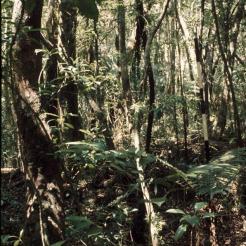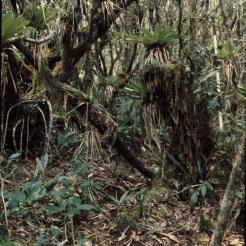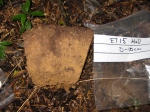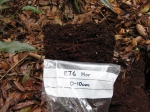Updated: 25/04/2025
What happens with plants, microbes and animals during soli transition from mull to mor? Find out in the Early View paper “Coordination of aboveground and belowground responses to local-scale soil fertility differences between two contrasting Jamaican rain forest types” by David Wardle and colleagues. below is their summary of the study:
There is much interest in understanding how long term decline in soil fertility, in the absence of major disturbance, drives ecological processes, or ‘ecosystem retrogression’. However, there are few well–characterized systems for exploring this phenomenon in the tropics. We studied two types of montane rain forest in the Blue Mountains of Jamaica that occur in patches adjacent to each other and represent distinct stages in ecosystem development, i.e., an early stage with shallow organic matter (‘mull’ stage) and a late stage with deep organic matter (‘mor’ stage). We measured responses of soil fertility and plant, soil microbial and nematode communities to the transition from mull to mor, and assessed whether these responses were coupled. For soil abiotic properties, we found this transition led to declining soil nitrogen and phosphorus, and reduced availability of phosphorus relative to nitrogen; this led to a shorter and less diverse forest. The resulting litter from the plant community entering the soil subsystem contained less nitrogen and phosphorus, resulting in poorer quality litter entering the soil. We also found impairment of soil microbes (but not nematodes) and an increasing role of fungi relative to bacteria during the transition. These results show that retrogression phenomena involving increasing nutrient (notably phosphorus) limitation can be important drivers in tropical systems, and are likely to involve aboveground–belowground feedbacks whereby plants produce litter that is less nutritious, impairing soil microbial processes and thus reducing the release of nutrients from the soil needed for plant growth. This type of feedback between plants and the soil may serve as major though often overlooked drivers of long term environmental change.
Pictures: Characteristic ‘mull’ forest (top left) and uppermost soil layer with significant mixing of organic material and mineral soil (bottom left); and characteristic ‘mor’ forest (top right) with uppermost soil layer consisting of a thick layer of organic matter (bottom right). Over time the ‘mull’ soil transitions to ‘mor soil’, characterized by less available nutrients and reduced availability of nitrogen relative to phosphorus; this in turn has important consequences for the vegetation and quality of litter that is returned to the soil.
div { margin-top: 1em; } #google_ads_div_wpcom_below_post_adsafe_ad_container { display: block !important; }
]]>




